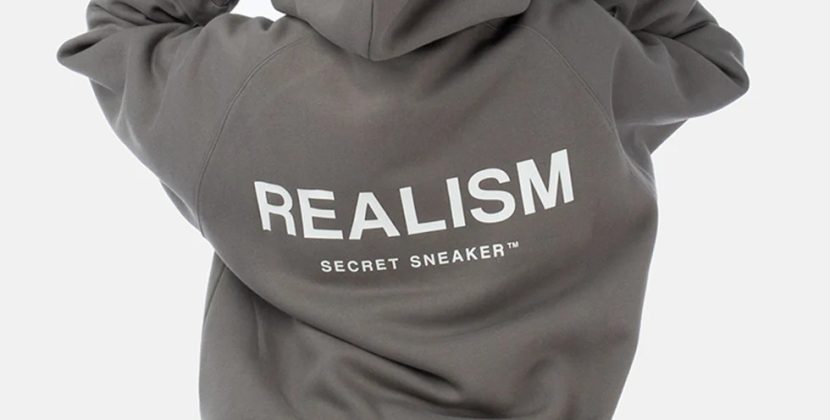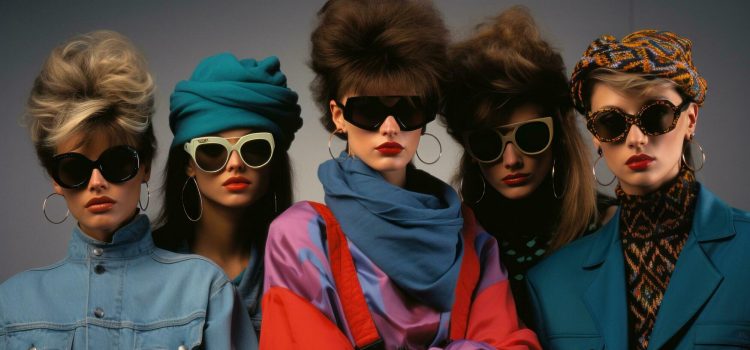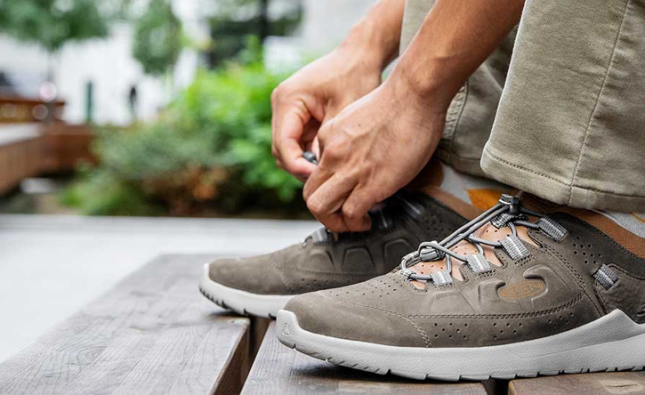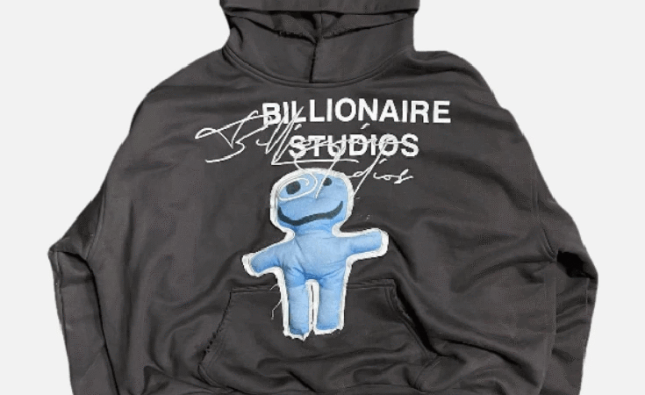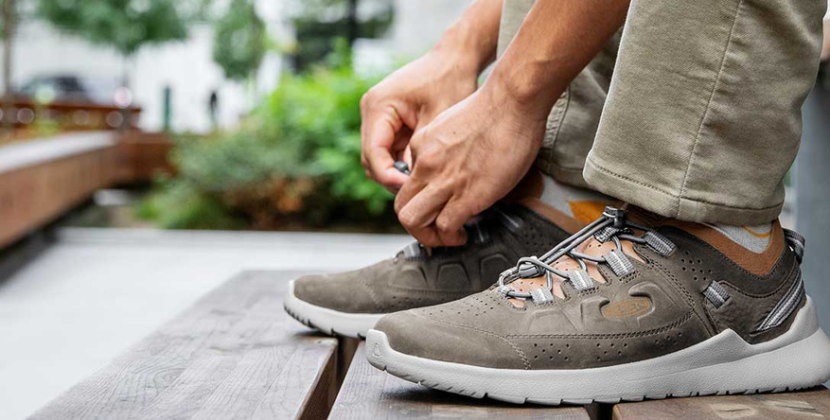
Introduction
Fashion is more than just clothing it’s a reflection of culture, history, and societal shifts. Every decade brings new trends, influenced by politics, technology, art, and pop culture. From the flapper dresses of the 1920s to the grunge aesthetic of the 1990s, fashion has continuously evolved, shaping and being shaped by the times. The history of fashion tells the story of how we express ourselves, challenge norms, and embrace individuality. Whether you’re a style enthusiast or just curious about how fashion trends have transformed over the years, this journey through the decades will give you a new appreciation for the art of dressing. In this article, we’ll explore the key fashion trends and iconic styles from the 1920s to today, highlighting how each era left its mark on the world of fashion. Ready to step back in time? Let’s dive into the evolution of style.
Key Trends: History of Fashion Through the Decades
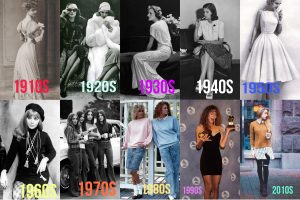
1. The Roaring 1920s: Flappers and Fringe
The 1920s marked a revolutionary shift in fashion, with flapper dresses, dropped waistlines, and bold accessories symbolizing freedom and rebellion.
Key Trends: Fringe dresses, cloche hats, and Art Deco-inspired jewelry.
Example: “Women embraced shorter hemlines and bobbed haircuts, reflecting newfound independence and the spirit of the Jazz Age.”
2. The Glamorous 1930s: Elegance Amidst Hardship
Despite the Great Depression, fashion in the 1930s was characterized by elegant silhouettes, bias-cut dresses, and sophisticated evening wear.
Key Trends: Floor-length gowns, padded shoulders, and sleek, feminine designs.
Example: “Hollywood’s Golden Age influenced glamorous styles, with stars like Jean Harlow setting fashion trends.”
3. The Practical 1940s: Utility and Wartime Fashion
World War II brought practicality to the forefront, with utility clothing, tailored suits, and functional designs becoming the norm.
Key Trends: High-waisted trousers, victory rolls, and military-inspired details.
Example: “Women took on factory jobs, leading to practical fashion choices like trousers and coveralls.”
4. The Fabulous 1950s: Full Skirts and Feminine Flair
Post-war prosperity in the 1950s brought back femininity and glamour, with full skirts, cinched waists, and polished looks.
Key Trends: Poodle skirts, cat-eye glasses, and polka dots.
Example: “Christian Dior’s ‘New Look’ redefined fashion with its hourglass silhouette and luxurious fabrics.”
5. The Swinging 1960s: Mod, Mini Skirts, and Bold Prints
The 1960s were a time of cultural revolution, reflected in mod fashion, vibrant colors, and daring hemlines.
Key Trends: Mini skirts, go-go boots, and psychedelic prints.
Example: “Icons like Twiggy and Mary Quant popularized the mod look, making bold statements with fashion.”
6. The Free-Spirited 1970s: Boho, Disco, and Diversity
The 1970s embraced individuality and freedom, with diverse styles ranging from bohemian to disco glam.
Key Trends: Bell-bottoms, platform shoes, and flowy maxi dresses.
Example: “The disco era brought sequins and glitter to the forefront, while boho styles reflected a love for nature and self-expression.”
7. The Bold 1980s: Power Dressing and Neon Vibes
The 1980s were all about excess and boldness, with oversized silhouettes, bright colors, and power dressing dominating the scene.
Key Trends: Shoulder pads, leg warmers, and bold patterns.
Example: “The rise of businesswomen brought power suits into mainstream fashion, while pop icons like Madonna influenced street style.”
8. The Grunge 1990s: Minimalism and Rebellion
The 1990s were marked by grunge aesthetics and a shift towards minimalist fashion, reflecting a more casual, rebellious attitude.
Key Trends: Flannel shirts, ripped jeans, and slip dresses.
Example: “Grunge bands like Nirvana influenced the ‘anti-fashion’ movement, while minimalist designers like Calvin Klein embraced simplicity.”
9. The Eclectic 2000s: Y2K and Pop Culture Influence
The early 2000s were a mix of futuristic styles and nostalgic nods, with pop culture heavily influencing fashion trends.
Key Trends: Low-rise jeans, crop tops, and bedazzled accessories.
Example: “Icons like Britney Spears and Paris Hilton popularized the glitzy Y2K aesthetic, while tech-inspired looks hinted at the future.”
10. The Diverse 2010s to Today: Sustainability and Individuality
Modern fashion embraces sustainability, diversity, and personal expression, with trends blending vintage influences and contemporary styles.
Key Trends: Athleisure, gender-fluid fashion, and eco-friendly materials.
Example: “The rise of social media and fast fashion created a dynamic, ever-changing fashion landscape, while sustainability became a key focus.”
The Impact of Globalization on Fashion
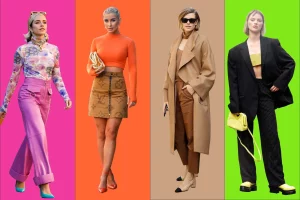
Globalization has had a major impact on the fashion industry. With the rise of the internet, trends can spread around the world in a matter of days. What’s fashionable in one part of the world can quickly influence styles in other places. This has created a more globalized fashion market, where designers and brands from all over the world share their creations. However, it has also led to concerns about the loss of traditional clothing styles and cultural appropriation, where elements of one culture are used by people from another without proper respect or understanding.
Challenges in Fashion Over the Years
Fashion has faced many challenges over the years. One challenge is keeping up with constantly changing trends. The pressure to stay fashionable can be stressful and costly for many people. Another challenge is the impact of fast fashion, which has been linked to environmental issues and unfair labor practices. In addition, the fashion industry has had to address issues like body image and inclusivity, as not all people have felt represented by mainstream fashion.
The Future of Fashion
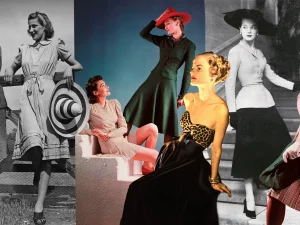
The future of fashion looks bright but faces new challenges. Sustainability is becoming a key focus as more people want eco-friendly clothing. Advances in technology, like 3D printing and smart fabrics, are expected to change the way we design and wear clothes. The rise of digital fashion, with clothing designed for virtual spaces, shows how fashion will continue to evolve with technology. The future of fashion will likely be more personalized, inclusive, and environmentally conscious.
Comparative Table of Fashion Through the Decades
| Decade | Women’s Fashion | Men’s Fashion | Key Trends |
|---|---|---|---|
| 1920s | Flapper dresses, bobbed hair | Slim-cut suits | Liberation, Jazz Age fashion |
| 1930s | Bias-cut dresses, elegance | Double-breasted suits, tuxedos | Hollywood glamour, sophistication |
| 1940s | Utility dresses, military styles | Military-inspired jackets | WWII influence, rationing |
| 1950s | Hourglass figures, full skirts | Slim trousers, tailored suits | Glamour, femininity |
| 1960s | Mini skirts, mod fashion | Casual styles, slim-cut suits | Youthquake, bold patterns |
| 1970s | Bohemian dresses, platform shoes | Flared trousers, unisex fashion | Disco, hippie, freedom of expression |
| 1980s | Power suits, oversized jackets | Casual jackets, graphic tees | Bold colors, athletic wear |
| 1990s | Minimalist fashion, slip dresses | Baggy jeans, graphic tees | Grunge, supermodels |
| 2000s | Low-rise jeans, trucker hats | Casual T-shirts, baggy jeans | Fast fashion, casual cool |
| 2010s | Sustainable fashion, athleisure | Streetwear, casual chic | Digital influence, sustainability |
Analysis Table
| Factor | 1920s | 1980s | 2010s |
|---|---|---|---|
| Key Influence | Jazz, cinema | Pop culture, power dressing | Social media, sustainability |
| Fashion Icons | Flappers, Hollywood stars | Madonna, Michael Jackson | Instagram influencers, eco-conscious designers |
| Social Change | Women’s rights, jazz age | Feminism, corporate power | Environmental activism, tech influence |
| Fabric Innovations | Silk, satin | Nylon, polyester | Eco-friendly fabrics |
| Popular Trends | Bobbed hair, drop waist | Power suits, neon | Athleisure, digital influence |
Conclusion
The history of fashion is a reflection of the times an ever-evolving art form that captures the spirit of each decade. From the rebellious flappers of the 1920s to today’s focus on sustainability and individuality, fashion continues to inspire, challenge, and celebrate self-expression. As we look back on these iconic styles and trends, we can see how fashion not only mirrors cultural shifts but also influences how we view ourselves and the world around us. Whether you’re drawn to the elegance of the 1950s, the boldness of the 1980s, or the minimalism of the 1990s, fashion offers a rich tapestry of inspiration and creativity. So, what’s your favorite era of style? Explore, experiment, and let your wardrobe tell your story.
Call to Action
Which decade of fashion inspires you the most? Share your favorite styles in the comments below, and subscribe for more fashion history and style tips!

